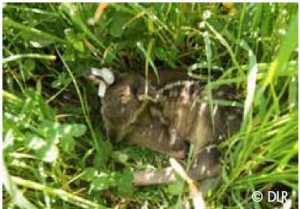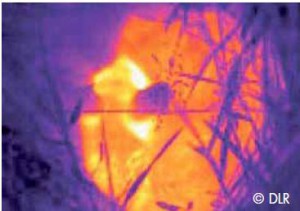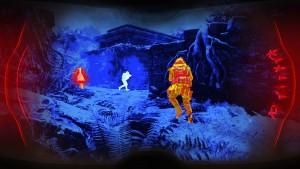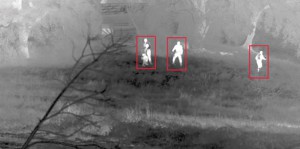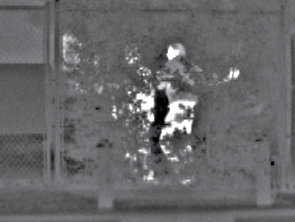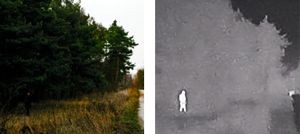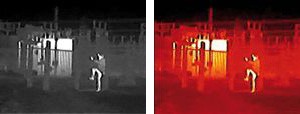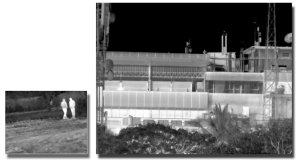How do thermal imaging cameras work?
Thermal imaging cameras, also called infrared cameras, detect the heat given off by an object or person. Thermal imaging cameras have lenses, just like visible light cameras. But in this case the lens focuses waves from the infrared energy present in all objects onto an infrared sensor array. Thousands of sensors on the array convert the infrared energy into electrical signals, which create a video image. The infrared camera measures and displays a “thermal profile” of objects in relation to the temperature of surrounding objects. So a person, warmer than the surrounding air, appears “white” while the cooler surrounding air or buildings will appear in varying shades of gray.
Can thermal imaging cameras see through exterior walls into houses?
No. These cameras only “see” heat as it radiates off of an object. It may “see” the heat coming from a house, but it can’t see into the house because the camera picks up the house’s exterior thermal image first. In fact, the thermal imaging doesn’t even see through glass because the glass has its own thermal profile.
Thermal imaging has also been used to improve energy conservation. Infrared systems have been used for years to monitor homes for heat loss to spot gaps in insulation.
Can thermal imaging see through clothing?
Not really. Although, if, for example, a suspect had a gun under their shirt, its exterior area would appear “cooler” to the camera and indicate to police that someone may be carrying a gun.
How is law enforcement using this technology?
In a number of important ways. First, it helps police officers stay safe by spotting suspects hiding in bushes or in dark alleys — in fact it can “see” someone hiding behind an object like a box or trash can if that person radiates enough heat to cast a thermal image around the object.
It assists police in pursuit. Thermal cameras can see people running in the night, even through the cover of trees. These cameras are also used to identify a recently driven car (by the warmth of the hood), or in some cases even the warmth of the skid marks left by a fleeing car.
Thermal imaging cameras are also used for evidence collection. The technology can help police officers spot an object a suspect has discarded while being pursued, or gather evidence or uncover situations of evidence tampering at a crime scene.
After executing a search warrant, police may sometimes use these cameras to look for objects hidden in interior walls, like drugs or money. These objects act like insulation in the walls, and may produce a different thermal image in that section of the wall compared with the surrounding wall space and studs.
Public safety officers such as search and rescue personnel and firemen also use thermal imaging. Many fire departments use hand-held or helmet-mounted cameras to see through smoke to find victims, or to see “hot spots” in walls before a fire spreads.
Are these cameras like the night goggles used by the military that we sometimes see in the movies?
No, those “greenish” images are really “image intensification” technology. These cameras, which consumers can buy for a few hundred dollars, amplify dim available light to simulate daylight. Thermal imaging cameras are more expensive and don’t rely on visible light. Instead, they produce a “thermal profile,” which highlights the temperature differences of objects.
This article comes from pr-infrared edit released
